In the late 60s, the USN's air defense systems were in crisis. While the first generation of SAMs, the 3T missiles, had been successfully introduced into operation, they were proving extremely unreliable in service, and the decision was made to upgrade the Terrier and Tartar missiles. These missiles used essentially the same forward section, with different motors and a separate booster for Terrier, and a new standard missile was proposed that would unify the medium range and extended-range missiles, changing only the motor and power supply1 between the two. For some reason, nobody thought to give it a better name than Standard, which remains in use to this day.
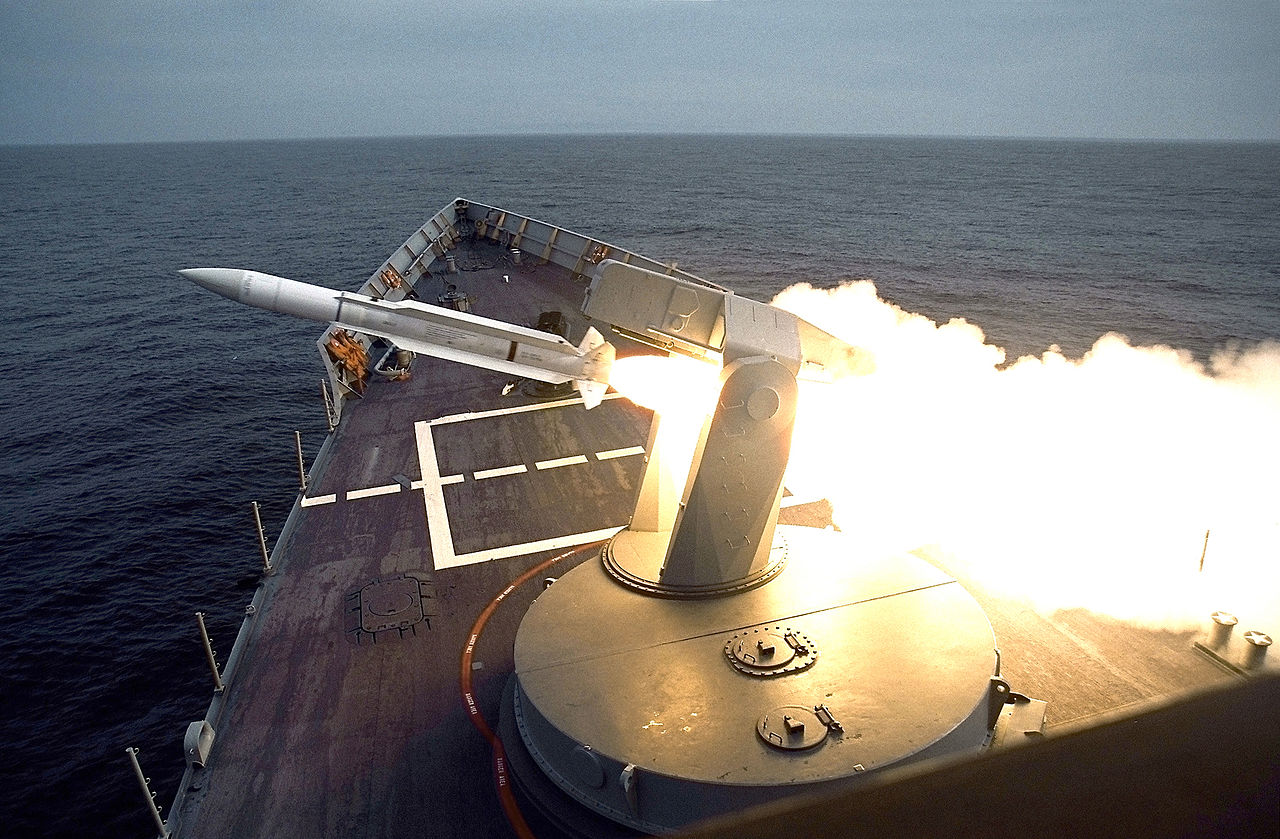
An SM-1MR is launched from frigate George Philip
In broad outlines, Standard was the same as the missiles it replaced, a rocket-propelled semi-active homing weapon designated RIM-66 for the MR (medium-range/Tartar replacement) version and RIM-67 for the ER (Terrier replacement). It used all of the same shipboard equipment, including launchers and guidance radars, as its predecessors, but the missile itself used all solid-state electronics, and replaced hydraulic actuators with electric motors. This meant that the warmup time dropped from 26 seconds for a late-model Tartar to only 1 second, while both missiles were deployed as "wooden rounds", requiring no tests over the 3-year interval between depot servicing. Range and altitude performance matched the predecessor missiles, 17 nm and 65,000' for RIM-66A SM-1MR and 40 nm and 80,000' for RIM-67A SM-1ER.2 An adaptive autopilot could handle any potential conditions of missile flight, regardless of altitude, airspeed or missile weight. Service entry came in 1968, and Standard rapidly began to replace the previous systems in service.
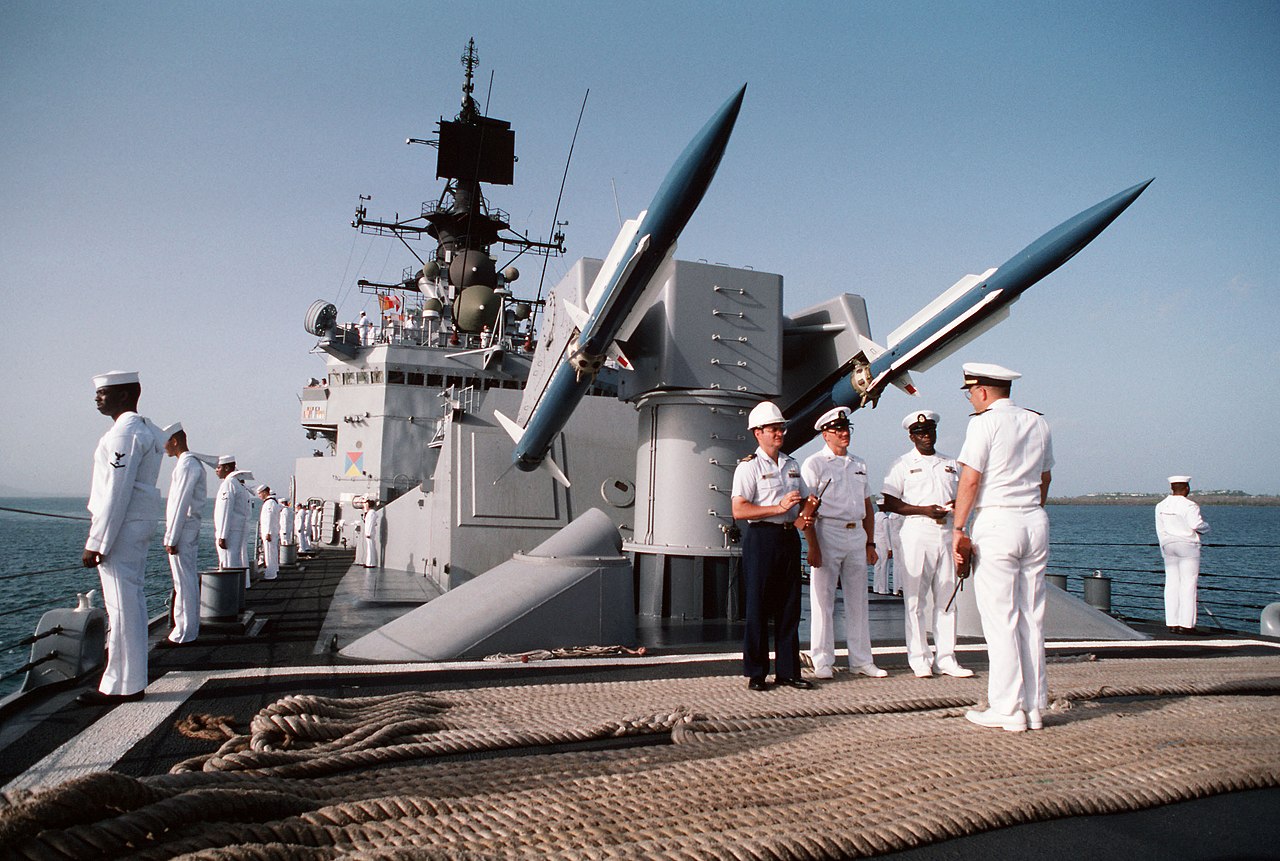
RIM-67s on missile cruiser Josephus Daniels
Throughout its life, Standard has received a vast number of upgrades, usually introduced in a group known as a Block. The Block series doesn't always align with the more conventional designation, as SM-1MR Blocks I through IV were all designated RIM-66A. Block V, which had an improved dual-thrust motor3 giving a theoretical range of 25 nm and an altitude of 80,000', did get a new designation, RIM-66B. During tests, both this missile and its longer-ranged brother outperformed their theoretical potential, reaching ranges of 38 nm and 70 nm respectively. They also continued to receive smaller upgrades, such as a new proximity fuze adapted to the threat of anti-ship missiles. Earlier proximity fuzes had essentially waited a set amount of time after picking up a target, but by the late 60s, it was impossible to find a compromise time that wouldn't either go off too early to hit a big target or let an ASM slip past. The answer was to use two beams instead of one, which allowed the proximity fuze to measure target length and set its delay time accordingly. It also offered improved performance against surface targets, an increasing worry thanks to the growing threat of missile boats.
RIM-66s on the aft launcher of Ticonderoga
But even a fancy new fuze wasn't enough to deal with the emerging threat of saturation attacks from anti-ship missiles. That would require an integrated system including a sophisticated radar and a combat system to tie it all together. But this system would bring in new capabilities, which would require updated missiles to make full use of them. These missiles would generally be known as SM-2, and started with Block I, covering the RIM-66C, RIM-66D SM-2MR and RIM-67B SM-2ER. One of the major bottlenecks in the existing air-defense systems were the illuminators that painted the targets for the missiles to home in on, which limited the number of targets a ship could engage at once. To solve this, the new missiles would be fitted with a programmable autopilot that would fly them to a point in space near the target, only requiring the illuminator for the last few seconds before impact. But that was far from the autopilot's only advantage. The flight profile produced by homing in on a target is relatively inefficient, and the autopilot could fly a much more efficient trajectory, extending nominal range to around 40 nm for SM-2MR and 80 nm for SM-2ER. The autopilot was supplemented by a datalink that allowed the launching ship to update it in-flight, but only Aegis was capable of using this capability, thanks to the precision of its SPY-1 radar. However, older ships could still take advantage of the autopilot under the New Threat Upgrade program, pre-setting the autopilot and switching their illuminators on earlier, although the autopilot update appears to have been rolled out to some of them later. Another advantage was increased illuminator range, as the energy only had to get to the target and back to a nearby missile, instead of making the entire round-trip.
A Standard is fired from Ticonderoga's aft launcher
Other minor upgrades, including a monopulse seeker for better countermeasures resistance and an improved warhead, were fitted to the early SM-2s. The full capabilities of Aegis required a high rate of fire, which meant that the early Ticonderogas had Mk 26 launchers for RIM-66C SM-2MRs, while NTU ships carried either RIM-67B SM-2ERs or RIM-66D SM-2MRs.4 Some of the improvements, such as the warhead and seeker, were incorporated into SM-1MR Block VI, also known as RIM-66E, for use by ships which didn't receive the NTU upgrade. Some missiles of this type remain in use by export customers despite its retirement from USN service.
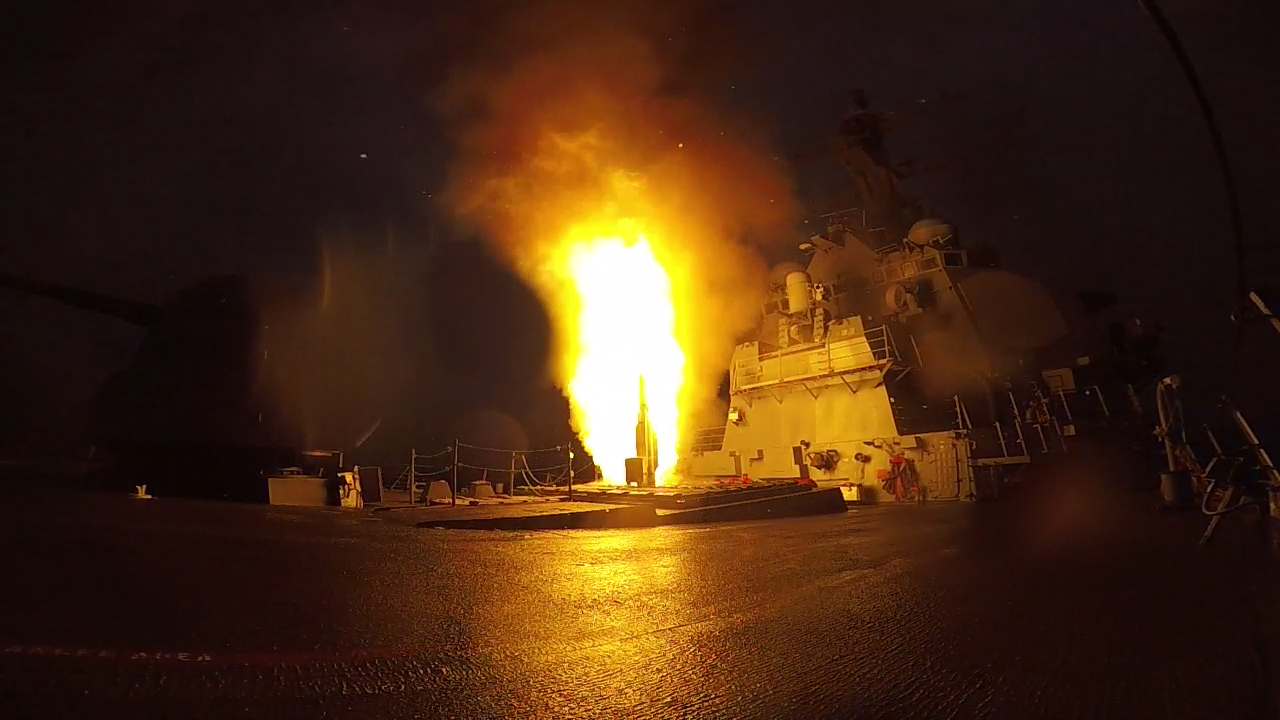
An SM-2MR is fired from the VLS on destroyer The Sullivans
SM-2 Block II, which entered service in the mid-80s, was almost as confusing, as it involved not three but four different missiles. The RIM-66G Aegis/Mk 26 missile was procured for the early Ticos, while the Mk 41 vertical launch system5 used by later units of that type required a different missile, the RIM-66H. And NTU ships retained their distinct missiles, the RIM-66J6 and RIM-67C. The big upgrade for Block II was an improved booster that essentially doubled range yet again, requiring a 10" stretch to the SM-2MR. In practice, this brought the range of the SM-2MR missile to the limits of the illuminators, and pushed the SM-2ER well beyond them, although the extra energy would still be useful in dealing with fast-moving targets.
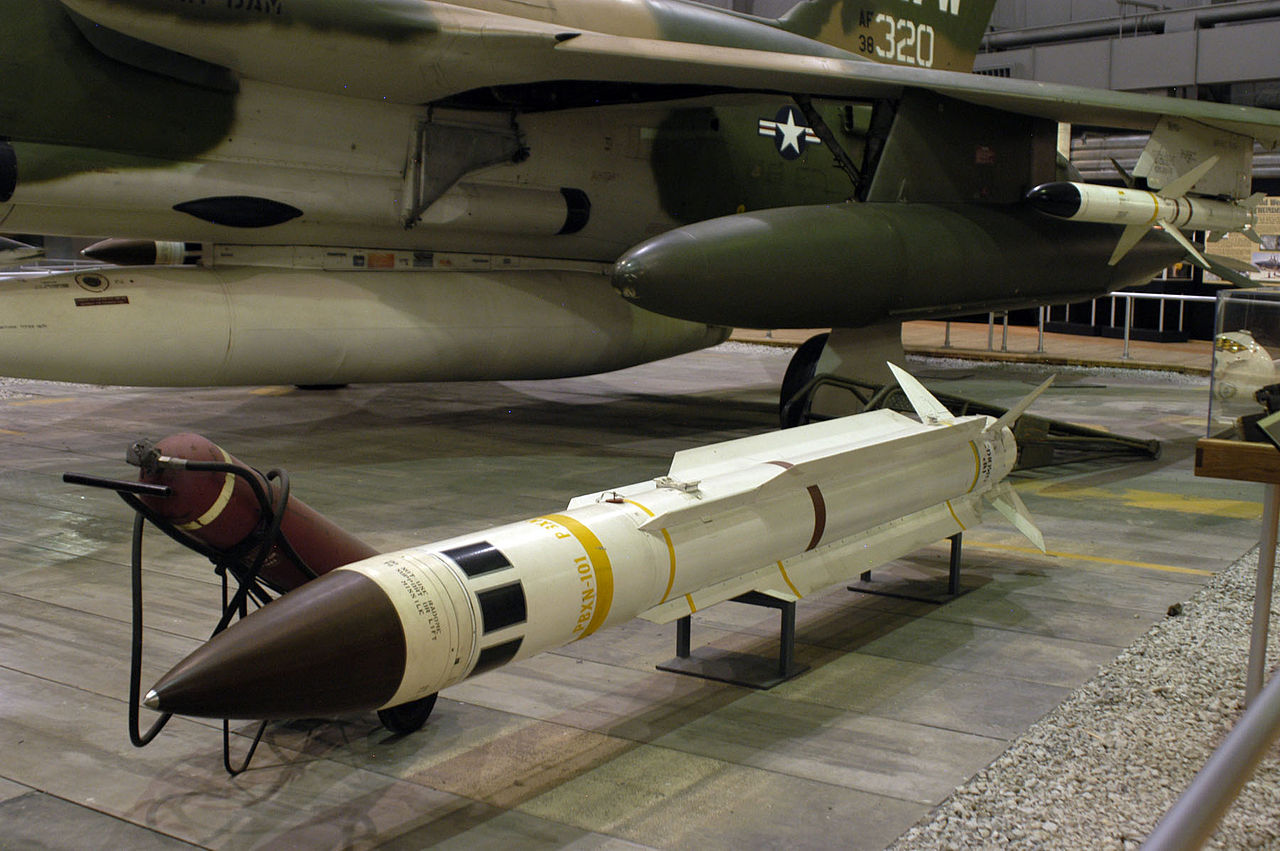
AGM-78 Standard ARM
Nor was Standard restricted entirely to air-defense missions during this period. As the USN's major surface missile program during this era, it was proposed for a number of different roles in the 60s and early 70s. The most prominent is the AGM-78 Standard ARM, originally developed to give a more capable anti-radiation missile over Vietnam. It began life as an RIM-66A with the seeker off of the Shrike ARM, although later versions had improved electronics and remained in service until the late 80s. Standard ARM was also the basis for the abortive AIM-97 Seekbat air-to-air missile, planned in the early 70s as a counter to the Soviet MiG-25 before technical problems and growing awareness of the MiG-25's limitations caused its cancellation.
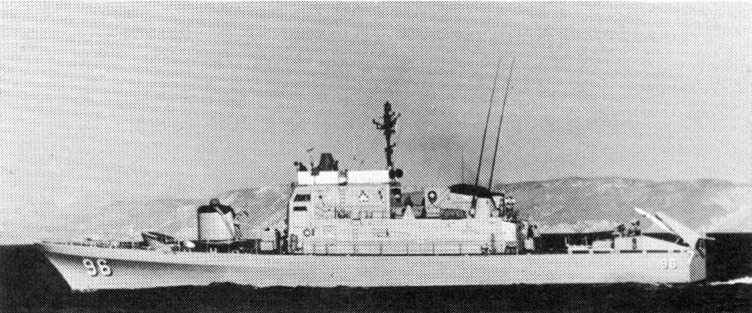
Gunboat Benicia shows RGM-66 Standards
Standard ARM also served to plug a major gap in the US fleet in the early 70s. The sinking of the Eilat had dramatically demonstrated the threat of anti-ship missiles to the world's navies, leaving the USN scrambling to catch up. While Harpoon would eventually come to fill this role, in the short-term, the USN turned once again to Standard, mating the seeker of the AGM-78 with the body of a RIM-66B to produce the RGM-66D Standard ARM. This weapon was deployed by both US and foreign navies, most prominently on the Ashville class gunboats, and would have been quite potent as an anti-ship weapon in the years before it was replaced by Harpoon. Ships tend to be quite cramped compared to land sites, and even the ~140 lb warhead of a Standard would do quite a lot of damage, particularly to a missile boat. Two more surface-to-surface Standards were developed, the RGM-66E for use from ASROC box launchers and the RGM-66F, equipped with an active monopulse doppler seeker intended to give over-the-horizon capability. Tests of this seeker were successful, but the high trajectory of the missile, and the imminent development of Harpoon, saw it cancelled.
Standard's first two decades of service demonstrated its great versatility, as the same basic missile architecture provided the basis for a variety of weapons aimed at radically different targets. But its story was far from over, and we'll pick it up with the Block III upgrade next time.
1 A longer-lasting power supply was required for the longer flight time of the ER missile. ⇑
2 Note that numbers like this are inevitably rather simplistic. The missile definitely can't do maximum range and maximum altitude at the same time, but the exact details of these envelopes are classified. ⇑
3 The motor has two different types of grains. The first section burns very fast, to get the missile up to speed, while the rest burns more slowly to keep it there throughout the flight. ⇑
4 Nobody seems to have good details on the differences between the Aegis and NTU versions of the missile. ⇑
5 Note that VLS was enabled by the autopilot, as earlier missiles had to be launched to where they could see the target. ⇑
6 RIM-66F was skipped for unknown reasons, while I is never used as a suffix letter because it looks too much like the number 1. ⇑

Comments
On the detail picture of the Tico arm launcher, what are the plane icons? Target drones? Or did it actually shoot down 5 enemy aircraft?
Momentary confusion while reading "nm", shared for comedic effort. EE use nm for nanometers, for which a range of 17nm would be comically short. I quickly realized my error, nm standing for nautical miles, but still found it amusing and figured I'd share it for a chuckle.
I think they're target drones. The only Tico to actually shoot down airplanes in real life was Vincinnes, and I have a feeling they didn't paint that one on the launcher.
@woah
Yeah, that's an annoying overlap.
Many years ago, I used to work for a small defense contractor that made electronic warfare gear, mainly for training applications. One of our big customers was a naval air station that bought DRFM (*) pods to mount on their target drones: the idea being that it's more cost-effective to practice shooting down a false radar return generated by a drone-mounted DRFM than to practice shooting down the drone itself. If you successfully shoot the drone down, you need to buy a new drone, but a single drone can produce a nearly limitless supply of false radar returns.
It didn't always work. Sometimes they'd miss by just the right amount, or they'd aim for the real return instead of the false one, and we'd get a unit sent bad for warranty repairs with salt water damage.
(*) Digital Radio Frequency Memory. The idea is to record incoming radar pulses and then play them back with a delay so they look like a real return from a slightly later pulse. By modulating the timing of the playback and shifting the frequency, you can generate a false return with a different distance and relative velocity from the radar trying to track you than you actually are.
Isn't there a risk that, in a shooting war, they'll fight the way they trained?
I wondered about that, too, but since I only heard about it second-hand I didn't have an opportunity to ask them how they mitigated against that.
My best guess is that there's separate training for radar operators to distinguish false returns. You could conceivably use the same drone+DRFM setup without a live-fire air defense weapon to practice identifying, tracking, and "shooting" the drone rather than the false return.
I'm really happy about this one, because I've never been able to make heads or tales out of the standards. I still can't, but I feel like I'm closer....